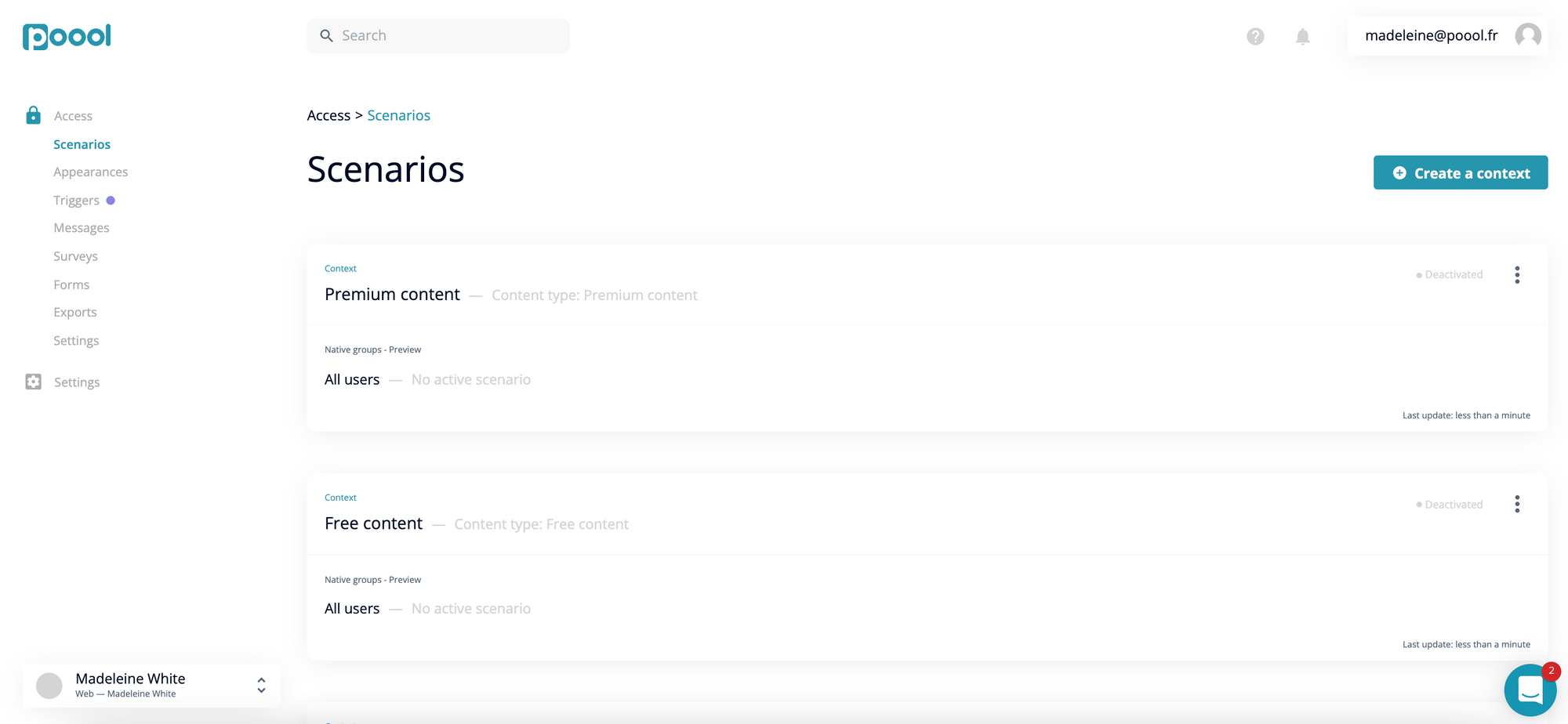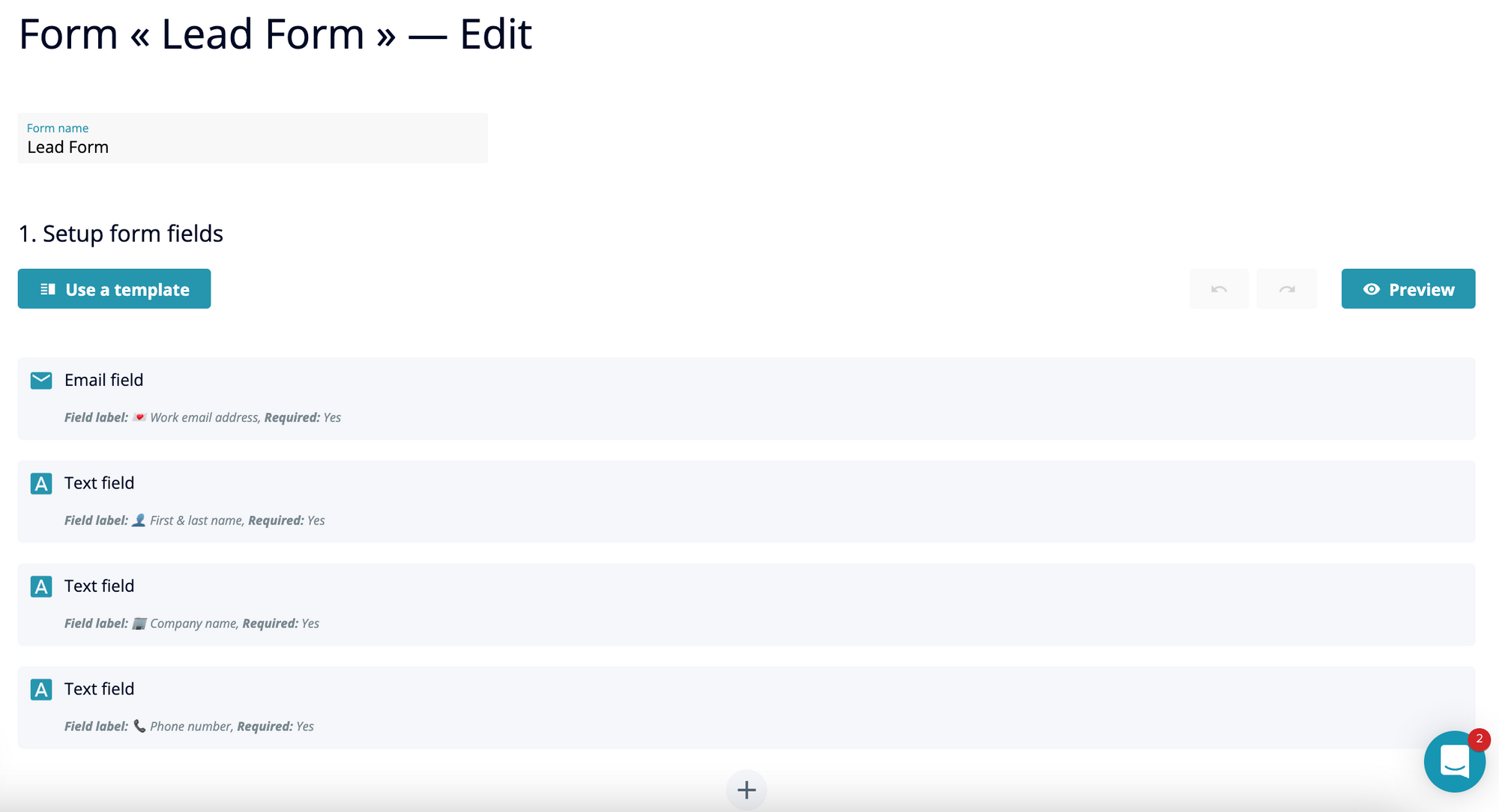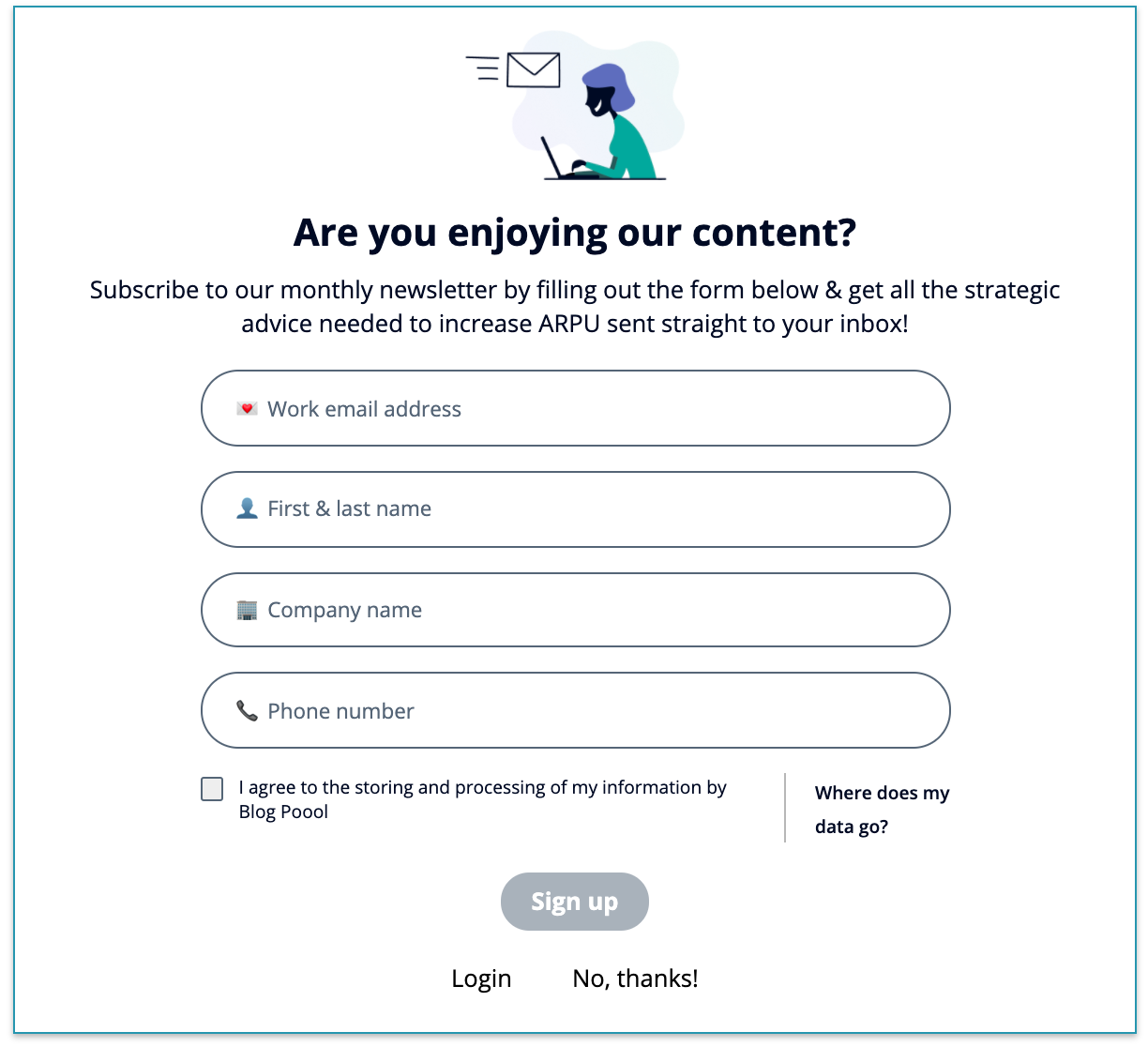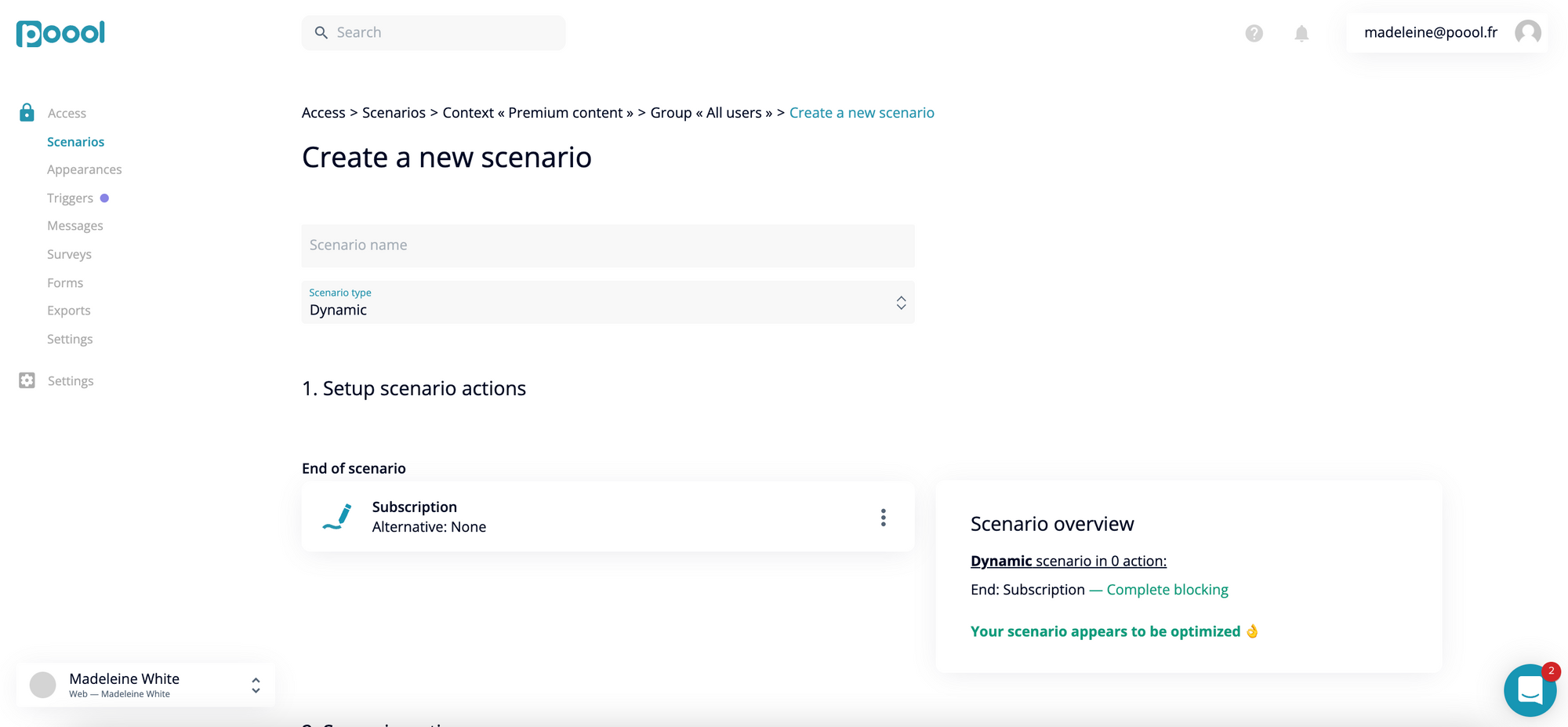Today, the internet gives us access to any type of content that our heart desires. We could learn a language, take fitness classes, listen to podcasts of any genre or read about the latest news stories. It’s an amazing world of opportunities for both online users, as the consumers of this content, and for the content producers themselves.
With the vast amount available, monetizing online content is becoming increasingly easier. Users are more likely to be willing to pay for access, especially for content that’s specialized and of a high quality. This can be achieved through integrating a paywall into your site, which asks for a value exchange of subscription payment to access content. Not only this, but even just requiring users to register (a registration wall), which costs them nothing, can bring value to the publisher. It's particularly useful for collecting first-party data (very important with the end of 3rd-party cookies) meaning you can personalize the user journey, monetize from targeted advertising and build a strong relationship with your audience.
What’s more, a paywall or registration wall can be used by, and benefit, producers of any type of content!
This is what our series ‘Paywall for…’ is all about. We want to highlight the advantages of using a paywall or registration wall for any content publisher, whether they’re an e-learning or online class platform, brand, video streaming website or podcast and music producer.
We’ll cover:
- What content types are included in this category?
- How to monetize: deciding on which wall to employ including examples from successful content producers
- Best practices
- How can Poool help?
Today: Paywalls for online classes and e-learning
Online learning, in its many forms, has grown considerably in popularity over recent years, and with good reason. Not only is it significantly cheaper than traditional learning, it’s less time consuming and can be created and taught anywhere in the world. This has made it evolve particularly well during the Covid-19 pandemic when everyone had more spare time and wasn’t able to attend in-person classes. What’s more, e-learning can make use of data from the user to completely tailor lessons to the individual as well as allow a student to work at their own pace.
According to the e-learning industry, the global elearning market will reach $325 billion by 2025.
With this in mind, e-learning sites and online courses have huge monetization potential. However, many struggle to find the tools and strategies to effectively turn their educational content into a business.
- You need to produce quality content and give value to users (this is on you)
- You need to bring traffic to your content (again, you)
- You need to transform these audiences into business (using a tool)
This is where walls (specifically, paywalls and registration walls) can help. Monetize your online classes or e-learning content with ease with a paywall or registration wall.
1) What content types are included in this category?
There’s such a huge variety of classes and e-learning sites available online today that it’s increasingly hard to categorize them! Here are just some of the content that you can find:
- Language learning, often question-answer or quiz style to work through progressively more difficult lessons: Duolingo, Rosetta Stone,
- Creative classes, usually in a video format: Skillshare, Masterclass
- Fitness/health classes, including follow-along on-demand videos, written workouts or live classes: Glo, Gaia Yoga
- University courses, anything from live webinars, pre-recorded lectures and podcasts or worksheet style learning: Open University, edX,
- Classes offered by businesses from another industry, these usually share information about the industry that the business works in and, more specifically, tips on how to make the most out of their site (indirect self-promotion): LinkedIn learning (e-learning for professionals and job-seekers), Google Digital Garage (classes for digital marketers), Facebook blueprint (to help marketers use Facebook to their advantage)
- Business/job specific courses, specialized in a certain industry and targeting a specific industry: National Online Teacher Training (NOTT), Codecademy (coding lessons)
- Classes for children, based around school subjects and taught in a fun, often interactive, way including games, worksheets, quizzes and videos: e-learning for kids, Night Zookeeper
Note that each online learning site has a clear value proposition, a specific teaching style and a particular topic focus. We’ll discuss this in more detail later on in the article but these are extremely important points to take into account when moving to a registration or subscription model.
2) How to monetize online classes: paywall or registration wall for e-learning?
You have a lot of options here, and each one comes with their advantages and limitations.
Before looking at the possible wall options that you can use on your site, it’s also possible to monetize via donations. The Guardian is famous for employing and surviving off this strategy. An e-learning platform example which employs a donation model is E-learning for kids. Throughout the site, they highlight that their goal is to provide free education, with donations allowing them to achieve this. It's clearly a great strategy for helping children of all ages and backgrounds without a subscription fee, however it's a fairly unstable monetization model.
Registration Wall for e-learning and online courses:
An alternative, which is hugely more beneficial, free for users and can be used alongside a donation model is a registration wall.
A registration wall blocks content and requires that the user creates a free account in order to gain access. In this way, you create a value exchange that doesn’t involve a subscription fee. Namely, your users get access to content in exchange for 1st-party data that can inform your business strategies, be used for ad-targeting and to personalize a user’s experience.
How does a registration wall collect first-party data?
By requiring that you users create an account before accessing content, you can not only collect their email address and other information needed in the registration process, but you can also then track their actions and interactions on your site, analyze their behavior, personalize their experience, target advertising and ultimately build a stronger relationship with your audience.
Aside from first-party data collection, probably the greatest advantage of this model is that you can personalize the user’s account. One of the things that helps online learning to be so effective is that you can work at your own pace, choose your own classes, access content anywhere and at any time. So, if a user has their own ‘personal space’ within your site, you can give them the opportunity to resume content where they left it, save content for later, provide them with recommendations and allow them to set reminders, for example. These small additions can make a huge difference to the user’s experience and help them to remain loyal to your site over another.
For example, edX, an online massive open online course provider, offers free courses in a variety of subjects (paid classes are also available) but employs a registration wall that a user has to pass through before accessing content. Note that the regwall is only presented once a user decides to start a course. Anyone, with or without an account, can explore their site and view what courses are available.
You can see on this form, just above the ‘Create account’ button, that edX gives the option to provide more information to ‘support education research’. This highlights the value in first-party data for the content producer and how simply registering as a user can help support this e-learning platform.
Note the ease of registration on their site - a user simply fills out the form above and within a few clicks they’ve created an account. This helps to increase conversion and click-through rates. We’re also taken straight to the account page after registration where we can choose courses to enroll in, making for a very smooth user journey.
Paywall (subscription model) for e-learning and online courses:
A third option is utilizing a subscription model with a paywall.
A paywall also blocks content but instead requires that the user pays a subscription fee (one-time, monthly or yearly) in order to gain access.
What's the best paywall model for e-learning platforms?
This entirely depends on your strategy, but a paywall can take many forms. You could simply use a paywall on half of your content (freemium), present it after a certain amount of content has been accessed (metered) or block all users who visit your site and only allow those who subscribe to pass (hard). Find out more about the different paywall types in our ‘What is a paywall article’.
There are a great deal of benefits of this model. Monetization is probably the most obvious advantage as subscription provides a stable revenue stream, diversifying income so that the publisher isn't solely reliant on advertising. What’s more, just like with a regwall, subscription requires account creation which provides valuable first-party data. This can ultimately be used to personalize and optimize the user experience, improve engagement and customer loyalty as well as strengthen relationships with your audience.
Rosetta Stone, a language learning platform, uses a hard paywall model. They have 4 offers available which differ in terms of the length of time that a user will have access to content. The image below shows their landing page which acts as the paywall and subscription offer page simultaneously. This improves the customer experience by reducing the number of steps in the conversion funnel, however we can’t see any of the content or try out their lessons without paying first which may turn some users away.
When we select ‘get started’, having already chosen the language that we want to learn, a side bar presents us with the form and payment. Again, combining these stages makes the conversion funnel a lot quicker and easier to pass through. The fact that they show the billing details like a receipt, with full details of our ‘order’, the Norton logo and ‘100% satisfaction’ certificate, gives reassurance to users, a very important factor when collecting payment. Paypal is also usefully provided as an alternative payment method
If you employ a paywall model, remember to test, analyze and optimize every step in the conversion funnel as this will help you to turn unknown readers into loyal subscribers.
Hybrid wall model for e-learning and online courses:
You could employ both a registration and a paywall simultaneously. For example, you could choose to make 50% of your content free, but require that a user registers to gain access, whilst the other half is ‘premium’ content and is blocked by a paywall. This is a great way of allowing users to discover your content for free (whilst collecting first-party data) but reserving certain parts of your site for paying subscribers. What’s more, you can also create other benefits for ‘premium’ members, such as access to live events or extra content in another format (e.g. podcasts, newsletters).
For instance, Codecademy has a free and pro version. All users are required to pass a registration wall in order to access any content and are then able to work through lessons for free. However, there’s also a subscription option, ‘Codecademy Pro’ which offers member-only content, a step-by-step roadmap, real-world projects and community support.
Below is the dashboard for users who have created a free account. The ‘Pro’ version is advertised across the site and we’re offered a free trial. Importantly, registered users are up to 200% more likely to subscribe than anonymous visitors, so employing a registration wall before a paywall can be hugely beneficial. Your audience can discover your content and learn more about the value in subscription offers, gradually persuading them to pay for a premium version. What’s more, whilst they do this, you can collect valuable data about their behavior and interactions with your site in order to optimize their experience and better sell them premium content in the future!
Dynamic wall model for e-learning and online courses:
Finally, a dynamic model allows you to take hybridity to the next level and provide a different experience to users depending on their context. It’s a highly data-driven strategy that recognizes that there is no one-size-fits-all experience for every individual user. This model is ‘dynamic’ in that you can segment your audience based on the user context and present different experiences and journeys to each.
For example, you could decide to present a paywall to ‘fans’ of your site who appear to have a high propensity to subscribe, whilst new or volatile users can be shown a registration wall to entice them into your site and allow them to discover your content before asking for subscription.
Alternatively, you can employ a hard paywall model for all users but make it dynamic in order to optimize its effectiveness. This could include personalizing subscription offers to the user context, such as their location, occupation, how often they’ve visited your site etc. (e.g. reduced student offers, free trials for new users or even simply changing the currency depending on the user’s location). Find out more about optimizing a hard paywall here.
This is a brilliant model that allows you to employ the optimal journey for each individual user. Not only can you collect first-party data, personalize a user’s account space and experience as well as monetize your audience (just like with other models) but you will also have the highest conversion and retention rates if employed effectively. In order to find this ‘optimal journey’ for each user context, you’ll need to A/B test different variations, analyze results and adapt accordingly.
All this can be done of Poool’s Dashboard which allows you to easily and effectively integrate compensation choices, such as registration or subscription, into your user journeys, segment audiences, A/B test and analyze.
A quick note here that any of your content, whether they’re articles, videos, work-through lessons, quizzes or games, can be blocked by a wall in some way. You can either employ a wall before a user begins learning, after the introduction or half-way through. Remember though that it’s important to show your audience the value of your content, so providing the introduction or description of the course or lesson can be a great way to entice users to pass through the paywall or registration wall.
3) Best practices
- Define and ensure users are aware of your value proposition
Firstly, what is a value proposition?
It’s a statement that encapsulates the main reason why a user should choose your content over any other. It defines the kind of value that someone will get from registering or subscribing on your site.
To find what your value proposition is, Harvard Business School recommends asking yourself these 3 essential questions:
- Which customers are you going to serve?
- Which needs are you going to meet?
- What relative price will provide acceptable value for customers and acceptable profitability for the company?
This is a crucial first step before employing a registration wall or paywall because, no matter how optimal this strategy is, if a user doesn’t see the value in signing up to your website then they’ll find the content elsewhere. Not only does your value proposition need to be clearly defined within your company, but you need to make sure that your audience is aware of this value in order to convince and reassure them of why they should continue through the funnel.
Duolingo, for example, provides language learning resources online and has a clear value proposition for users in that the service is always available free of charge. This is emphasized throughout registration. Note that they also have a paid subscription offer, with extra benefits, but this is never a requirement.
Remember, paywalls are only a tool to convert users into subscribers. It’s your value proposition, among other factors, which will convince your audience to sign up!

- Optimize and personalize every stage of the funnel
There are many stages of the funnel (the user's journey from entering your site to becoming a registered user or subscriber) and many content producers often forget that each step needs to be optimized.
- Acquisition - how do you get new users to your website?
- Engagement - how do you engage these users once they’ve arrived on your website?
- Conversion - how do you convert them into registered users or subscribers?
- Retention - how to retain them and reduce churn?
- Upselling - how could you sell them products, services or other subscription offers in the future?
One way to achieve this is by personalizing the user journey. With a dynamic wall, you can segment your audience and create different experiences for each, depending on the user’s context. This ensures that you provide every user with the most optimal journey for them as an individual.
What’s more, for e-learning platforms, user’s often have an expectation that their experience will be completely personalized. This may include recommended content, a user account space, ability to resume content and even the simplest personalization of adding the user’s name into messages directed to them. Small details like this will go a long way in building a relationship with your users and creating a sense of belonging/community.
- Put your data to work and use it to drive your strategy
With third-party cookies coming to an end, many content-producers are concerned about the future of their data collection and how they can overcome this challenge. However, this could be an amazing opportunity for you to gather your own data (that’s in fact more valuable, reliable, relevant and of a higher quality) and use it to drive your strategy.
Once you ask users to register on your site, you’ll be able to collect information about their behavior, actions and interactions on your site (in a way that conforms with privacy regulations of course). This can then be used to inform your strategy and decision making, optimize user experiences and ultimately monetize your audience.
4) How can Poool help with your wall strategy?
Poool Access, our dynamic wall solution for content producers, is entirely adaptable and flexible to meet your business and marketing strategy. You can choose to employ a registration or paywall, or both, and configure every aspect of the content block, from the colors and branding to when users see it and who it’s presented to. Within our Dashboard, you’re able to segment your audience, creating different experiences for each based on contexts of your choice, as well as A/B test, analyze, adapt and export 1st-party data directly to your chosen data management platform.
For online classes and e-learning platforms, Poool's paywall solution is the ideal tool to turn your audience into a business.
Let’s have a look at an example:
We’ve created an e-learning platform that provides university-style courses for students. We decide to employ a wall model where all users are required to pass through a registration wall to access content, but half of our courses are premium and blocked by a paywall.
On the Poool Dashboard, in ‘Scenarios’, I create two separate groups for my site: Premium vs Free. This means that I can create a different scenario depending on the content type and label all of my courses as either Free or Premium.

For Free Content, I’d like to require registration to gain access - i.e. add a registration wall. Note that this won’t show up if the user is already logged in.
When I create a scenario within the Free Content group, I add the ‘Form’ widget which I can customize entirely to suit my needs, including the wording (in ‘Messages’ section), colors/font/design (in ‘Appearance’) and what information I require from the user (in ‘Form’), all without code!

Creating, for example, this registration wall, used on the Poool blog, which asks for for a user’s email address, name, company and phone number:


Note that data collected here is sent directly to your chosen data management system (Poool never handles it) which means it’s ready for you to use to inform your strategy and optimize the user journey without our Dashboard!
I then decide to add a paywall to the Premium Content group.
For this, I need to add the ‘Subscription’ widget into the scenario which will block content in this group and ask a user to subscribe in order to gain access. Again, I can personalize this wall entirely as well as configure where in the content it’s presented.

Even better, we can A/B test different scenarios within one group. For example, we’ve created two paywall scenarios within the Premium Content group that we want to test out so we trial each on half of our audience.


This can then be analyzed in the ‘Analysis’ section before we adapt our paywall to match results!
This isn’t all that’s possible with Poool’s solution however! You could employ a hard paywall strategy, a simple registration wall or mix the two.
Interested in trying out the Dashboard for yourself? We have a free trial that you can use to discover all that it has to offer - let's book you in!


